-

Jan
25
Interpretive Summary: Variability in feed intake the first days following weaning impacts gastrointestinal tract development, feeding patterns, and growth performance in nursery pigs
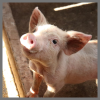
Poor adaptation to solid feed after weaning is often associated with a reduced digestive function and growth in nursery pigs. The reasons driving an early acceptance of feed and its consequences are still largely unknown. We investigated the effects of high and low feed intake between d1-3 after weaning on gastrointestinal development and morphometrics 1-wk after weaning and growth performance and feeding patterns in the nursery phase.
Read more
-

Jan
25
Interpretive Summary: A revised model of energy transactions and body composition in sheep
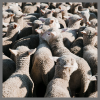
Based on prior work by Oltjen et al. (2006), a revised dynamic, mechanistic model was developed to improve the prediction of the composition of protein and fat in the body of growing ruminants. The revised model calculates heat production (HP) internally as a function of fasting HP, heat associated with feeding, and HP from changes in fat and protein within the body.
Read more
-

Jan
25
Interpretive Summary: Combined purebred and crossbred genetic evaluation of Columbia, Suffolk, and crossbred lamb birth and weaning weights: systematic effects and heterogeneous variances
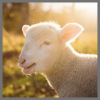
Combining multiple breeds in a genetic evaluation allows for their direct comparison. However, differences in management and other systematic effects among breeds may affect the evaluation. Estimates of genetic merit of sires may also be biased by heterosis in crossbred progeny.
Read more
-

Jan
17
Interpretive Summary: The effect of chronic, non-pathogenic maternal immune activation on offspring postnatal muscle and immune outcomes
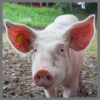
Maternal inflammation or immune activation impacts fetal development and subsequently the offspring’s postnatal performance. In particular, maternal immune activation may be detrimental to fetal muscle development and alter postnatal immune responses, both of which are vital in determining livestock efficiency.
Read more
-

Jan
17
Interpretive Summary: Short-term responses of meat ewes facing an acute nutritional challenge in early-mid lactation
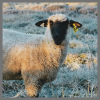
Climate change is imposing unexpected nutritional challenges to livestock (in time and magnitude). In this context, the individual adaptive capacity to respond to, and recover from those environmental fluctuations is an increasingly important trait to be considered in the daily management operations by the farmer and in future selection programs.
Read more
-

Jan
17
Interpretive Summary: Dietary of different forms of Humulus scandens on growth performance and intestinal bacterial communities in piglets
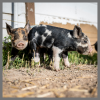
Humulus scandens (Hu), also referred to as Humulus japonicus, is an herb. Hu is reported to possess multiple biological functions, such as anti-inflammatory, antimicrobial, antimycobacterial, antioxidative, antimutagenic, and antitumor. Moreover, Hu contributed to improving the production performance of livestock.
Read more
-

Jan
17
Interpretive Summary: Effect of litter management systems on incidence and severity of footpad dermatitis among broilers at finisher stage
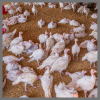
Pododermatitis (FPD) is the inflammation of the paw of chickens affecting some performance characteristics of chickens negatively. To assess the impact of different litter management systems on the incidence and severity of pododermatitis on broiler finishers raised in a humid tropical environment, an experiment was conducted using 180 male broilers divided among 3 groups.
Read more
-

Jan
17
Interpretive Summary: Copper metabolism and its implications for canine nutrition

Copper nutriture of the dog has recently received increased attention in the USA and European Union due to reports of apparent copper-associated hepatitis (CAH). Recent trends in canine nutrition have led to new questions regarding proper dietary copper concentrations in canine diets.
Read more
-

Jan
17
Interpretive Summary: Effects of monensin and cashew nut-shell extract on bacterial community composition in a dual-flow continuous culture system
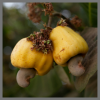
Methane emissions from ruminants constitute an important environmental concern to society and hold particular relevance within the dairy industry. Antibiotics such as monensin and secondary plant metabolites such as cashew nut-shell extract (CNSE) are used to manipulate the ruminal microbiome to improve energy efficiency and to reduce methane emissions from ruminants.
Read more
-

Jan
17
Steve and Patty Armbruster's Story
Having grown up on a wheat and beef cattle operation near Burlington, Oklahoma, animal agriculture has always held a special place in my heart. With a passion for making a positive impact on the world, for animals and humans, my career was shaped by diverse experiences. Throughout my career, I have experienced the inestimable benefits of ASAS membership, and I want to ensure that others have the same privileges and opportunities.
Supporting ASAS in perpetuity was a natural and important decision for Patty and me, as it has been an integral part of my life since graduate school. However, when I was asked to share the "story" of why we included ASAS in our estate plan, I found it difficult to express my thoughts meaningfully in writing. In my search for the right words, I returned to the ASAS website, where I had previously reflected on the evolution, mission, and vision of our organization. I was also able to read about the countless members whose lives have been transformed because of charitable contributions to the Foundation.
If you are seeking to articulate your passion for ASAS and leave a lasting impact, perhaps this exercise will help you as it did me. It is with great pride that we are ASAS Foundation 1908 Society members. Together, we can share the journey and shape the future.
Read more
-

Jan
11
Interpretive Summary: Amino acid standardized ileal digestibility together with concentrations of digestible and metabolizable energy in Saccharomyces cerevisiae yeast and soybean meal for gestating sows
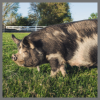
Saccharomyces cerevisiae yeast (SCY) is commonly used as an additive in feed (<1% of the formulation), but there is a limited amount of available information about its function as a promising source of proteins for pig diets, and especially, the nutritive value of yeast protein for gestating sows remains to be clarified.
Read more
-

Jan
11
Interpretive Summary: Unveiling the influence of adaptation time on xylanase and arabinoxylan-oligosaccharide efficacy
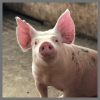
This study investigated the effects of xylanase and arabinoxylan-oligosaccharide supplementation on viscosity, nutrient and energy digestibility in growing pigs fed a high-fiber diet mainly composed of corn over three time periods. Twenty pigs were surgically fitted with cannula in their jejunum and ileum for sample collection.
Read more
-

Jan
11
Interpretive Summary: Minimum methionine requirement in adult cats as determined by indicator amino acid oxidation

The objective of this study was to determine the minimum Met requirement, when Cys was provided in excess, of adult cats using a highly sensitive and noninvasive technique, the indicator amino acid oxidation (IAAO). Six adult cats were fed experimental diets with varying levels of methionine for 2 d prior to each IAAO study day.
Read more
-

Jan
11
Interpretive Summary: Effects of dietary supplementation of different levels of gamma-aminobutyric acid on reproductive performance, glucose intolerance, and placental development of gilts
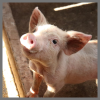
Glucose homeostasis and placental development are two key factors influencing reproductive performance of sows. Some studies have reported that gamma-aminobutyric acid (GABA) can improve glucose intolerance and cerebral angiogenesis in mice.
Read more
-

Jan
11
Interpretive Summary: Preweaning piglet survival on commercial farms
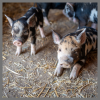
Sow prolificacy and preweaning piglet mortality have increased parallelly on commercial farms. This loss of piglets is a concern of efficiency and animal welfare, and it requires the improvement of piglet survival by reducing the number of stillborn piglets and piglet mortality during lactation, paying particular attention to hyperprolific sows (≥15 total piglets born per litter).
Read more
-

Jan
11
Interpretive Summary: Ageratina adenophora damages the rumen epithelium via inducing the expression of inflammatory factors in goats
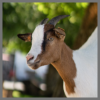
The article aims to investigate the toxic effects of Ageratina adenophora, an invasive plant on the integrity of the rumen epithelium by measuring the changes in the expression of inflammatory factors and tight junction proteins after the consumption of A. adenophora in goats.
Read more
-

Jan
05
Deana Hancock's Animal Science "Family Tree" Story

ASAS has been a constant presence in my family's life, opening doors and providing opportunities for three generations. It all began with my father-in-law, Gerald Hancock, as an undergraduate student at MU, where he had the privilege of taking Dr. Preston's classes. Then, I pursued my Ph.D. at Texas Tech, also studying under Dr. Preston. And now, the legacy continues with my daughter, Sydney Schnur, who recently graduated with a degree in animal science from Purdue and completed her Ph.D. in Veterinary ImmunoPathobiology at Kansas State under the guidance of a former student of Dr. Preston, Dan Thomson, Ph.D./DVM.
ASAS has been more than just an organization to us. It has been a second family, a source of support, and a catalyst for our growth and success. I am grateful for the doors it has opened for my family and for the countless opportunities it continues to provide.
Deana Hancock, Ph.D. | Director, Global Applied Research and Technology | Novus International
Read more
-

Jan
03
Interpretive Summary: Designing an early selection morphological traits index for reproductive efficiency in Pura Raza Española mares
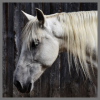
Historically in livestock production, employing combinations of traits as selection criteria for indirect selection of related traits has been a challenging task, particularly when this implies selection for reproductive traits based on the animal morphology. However, if the decision about animal selection is based on morphological traits that are quick and easy to obtain, in addition to early reproductive traits, selection responses can be improved and made earlier.
Read more
-

Jan
03
Interpretive Summary: Long-stranded non-coding RNAs temporal-specific expression profiles reveal longissimus dorsi muscle development and intramuscular fat deposition in Tianzhu white yak

In-depth analysis of the molecular regulatory mechanisms involved in the development of yak skeletal muscle can aid in the identification of crucial functional genes that may enhance the quality of yak meat in the future. Our research is the first to investigate the expression of long-stranded non-coding RNAs (lncRNAs) during muscle development and intramuscular fat deposition in Tianzhu white yaks at different ages (6, 30, and 54 mo).
Read more
-

Jan
03
Interpretive Summary: Effects of the central melanocortin system on feed intake, metabolic hormones and insulin action in the sheep
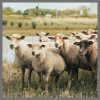
Highly productive ruminants face short-term nutritional deficits during demanding phases of their life cycle. They remain productive and healthy during these periods through a series of metabolic adaptations. Current models in ruminant biology attribute the coordination of these adaptations to circulating hormones and bioactive metabolites but have not considered the possibility that the central nervous system (CNS) is also involved.
Read more
 JanInterpretive Summary: Variability in feed intake the first days following weaning impacts gastrointestinal tract development, feeding patterns, and growth performance in nursery pigs
JanInterpretive Summary: Variability in feed intake the first days following weaning impacts gastrointestinal tract development, feeding patterns, and growth performance in nursery pigs Poor adaptation to solid feed after weaning is often associated with a reduced digestive function and growth in nursery pigs. The reasons driving an early acceptance of feed and its consequences are still largely unknown. We investigated the effects of high and low feed intake between d1-3 after weaning on gastrointestinal development and morphometrics 1-wk after weaning and growth performance and feeding patterns in the nursery phase.
Poor adaptation to solid feed after weaning is often associated with a reduced digestive function and growth in nursery pigs. The reasons driving an early acceptance of feed and its consequences are still largely unknown. We investigated the effects of high and low feed intake between d1-3 after weaning on gastrointestinal development and morphometrics 1-wk after weaning and growth performance and feeding patterns in the nursery phase. JanInterpretive Summary: A revised model of energy transactions and body composition in sheep
JanInterpretive Summary: A revised model of energy transactions and body composition in sheep Based on prior work by Oltjen et al. (2006), a revised dynamic, mechanistic model was developed to improve the prediction of the composition of protein and fat in the body of growing ruminants. The revised model calculates heat production (HP) internally as a function of fasting HP, heat associated with feeding, and HP from changes in fat and protein within the body.
Based on prior work by Oltjen et al. (2006), a revised dynamic, mechanistic model was developed to improve the prediction of the composition of protein and fat in the body of growing ruminants. The revised model calculates heat production (HP) internally as a function of fasting HP, heat associated with feeding, and HP from changes in fat and protein within the body. JanInterpretive Summary: Combined purebred and crossbred genetic evaluation of Columbia, Suffolk, and crossbred lamb birth and weaning weights: systematic effects and heterogeneous variances
JanInterpretive Summary: Combined purebred and crossbred genetic evaluation of Columbia, Suffolk, and crossbred lamb birth and weaning weights: systematic effects and heterogeneous variances Combining multiple breeds in a genetic evaluation allows for their direct comparison. However, differences in management and other systematic effects among breeds may affect the evaluation. Estimates of genetic merit of sires may also be biased by heterosis in crossbred progeny.
Combining multiple breeds in a genetic evaluation allows for their direct comparison. However, differences in management and other systematic effects among breeds may affect the evaluation. Estimates of genetic merit of sires may also be biased by heterosis in crossbred progeny. JanInterpretive Summary: The effect of chronic, non-pathogenic maternal immune activation on offspring postnatal muscle and immune outcomes
JanInterpretive Summary: The effect of chronic, non-pathogenic maternal immune activation on offspring postnatal muscle and immune outcomes Maternal inflammation or immune activation impacts fetal development and subsequently the offspring’s postnatal performance. In particular, maternal immune activation may be detrimental to fetal muscle development and alter postnatal immune responses, both of which are vital in determining livestock efficiency.
Maternal inflammation or immune activation impacts fetal development and subsequently the offspring’s postnatal performance. In particular, maternal immune activation may be detrimental to fetal muscle development and alter postnatal immune responses, both of which are vital in determining livestock efficiency. JanInterpretive Summary: Short-term responses of meat ewes facing an acute nutritional challenge in early-mid lactation
JanInterpretive Summary: Short-term responses of meat ewes facing an acute nutritional challenge in early-mid lactation Climate change is imposing unexpected nutritional challenges to livestock (in time and magnitude). In this context, the individual adaptive capacity to respond to, and recover from those environmental fluctuations is an increasingly important trait to be considered in the daily management operations by the farmer and in future selection programs.
Climate change is imposing unexpected nutritional challenges to livestock (in time and magnitude). In this context, the individual adaptive capacity to respond to, and recover from those environmental fluctuations is an increasingly important trait to be considered in the daily management operations by the farmer and in future selection programs. JanInterpretive Summary: Dietary of different forms of Humulus scandens on growth performance and intestinal bacterial communities in piglets
JanInterpretive Summary: Dietary of different forms of Humulus scandens on growth performance and intestinal bacterial communities in piglets Humulus scandens (Hu), also referred to as Humulus japonicus, is an herb. Hu is reported to possess multiple biological functions, such as anti-inflammatory, antimicrobial, antimycobacterial, antioxidative, antimutagenic, and antitumor. Moreover, Hu contributed to improving the production performance of livestock.
Humulus scandens (Hu), also referred to as Humulus japonicus, is an herb. Hu is reported to possess multiple biological functions, such as anti-inflammatory, antimicrobial, antimycobacterial, antioxidative, antimutagenic, and antitumor. Moreover, Hu contributed to improving the production performance of livestock. JanInterpretive Summary: Effect of litter management systems on incidence and severity of footpad dermatitis among broilers at finisher stage
JanInterpretive Summary: Effect of litter management systems on incidence and severity of footpad dermatitis among broilers at finisher stage Pododermatitis (FPD) is the inflammation of the paw of chickens affecting some performance characteristics of chickens negatively. To assess the impact of different litter management systems on the incidence and severity of pododermatitis on broiler finishers raised in a humid tropical environment, an experiment was conducted using 180 male broilers divided among 3 groups.
Pododermatitis (FPD) is the inflammation of the paw of chickens affecting some performance characteristics of chickens negatively. To assess the impact of different litter management systems on the incidence and severity of pododermatitis on broiler finishers raised in a humid tropical environment, an experiment was conducted using 180 male broilers divided among 3 groups. JanInterpretive Summary: Copper metabolism and its implications for canine nutrition
JanInterpretive Summary: Copper metabolism and its implications for canine nutrition Copper nutriture of the dog has recently received increased attention in the USA and European Union due to reports of apparent copper-associated hepatitis (CAH). Recent trends in canine nutrition have led to new questions regarding proper dietary copper concentrations in canine diets.
Copper nutriture of the dog has recently received increased attention in the USA and European Union due to reports of apparent copper-associated hepatitis (CAH). Recent trends in canine nutrition have led to new questions regarding proper dietary copper concentrations in canine diets. JanInterpretive Summary: Effects of monensin and cashew nut-shell extract on bacterial community composition in a dual-flow continuous culture system
JanInterpretive Summary: Effects of monensin and cashew nut-shell extract on bacterial community composition in a dual-flow continuous culture system Methane emissions from ruminants constitute an important environmental concern to society and hold particular relevance within the dairy industry. Antibiotics such as monensin and secondary plant metabolites such as cashew nut-shell extract (CNSE) are used to manipulate the ruminal microbiome to improve energy efficiency and to reduce methane emissions from ruminants.
Methane emissions from ruminants constitute an important environmental concern to society and hold particular relevance within the dairy industry. Antibiotics such as monensin and secondary plant metabolites such as cashew nut-shell extract (CNSE) are used to manipulate the ruminal microbiome to improve energy efficiency and to reduce methane emissions from ruminants. JanSteve and Patty Armbruster's Story
JanSteve and Patty Armbruster's Story JanInterpretive Summary: Amino acid standardized ileal digestibility together with concentrations of digestible and metabolizable energy in Saccharomyces cerevisiae yeast and soybean meal for gestating sows
JanInterpretive Summary: Amino acid standardized ileal digestibility together with concentrations of digestible and metabolizable energy in Saccharomyces cerevisiae yeast and soybean meal for gestating sows Saccharomyces cerevisiae yeast (SCY) is commonly used as an additive in feed (<1% of the formulation), but there is a limited amount of available information about its function as a promising source of proteins for pig diets, and especially, the nutritive value of yeast protein for gestating sows remains to be clarified.
Saccharomyces cerevisiae yeast (SCY) is commonly used as an additive in feed (<1% of the formulation), but there is a limited amount of available information about its function as a promising source of proteins for pig diets, and especially, the nutritive value of yeast protein for gestating sows remains to be clarified. JanInterpretive Summary: Unveiling the influence of adaptation time on xylanase and arabinoxylan-oligosaccharide efficacy
JanInterpretive Summary: Unveiling the influence of adaptation time on xylanase and arabinoxylan-oligosaccharide efficacy This study investigated the effects of xylanase and arabinoxylan-oligosaccharide supplementation on viscosity, nutrient and energy digestibility in growing pigs fed a high-fiber diet mainly composed of corn over three time periods. Twenty pigs were surgically fitted with cannula in their jejunum and ileum for sample collection.
This study investigated the effects of xylanase and arabinoxylan-oligosaccharide supplementation on viscosity, nutrient and energy digestibility in growing pigs fed a high-fiber diet mainly composed of corn over three time periods. Twenty pigs were surgically fitted with cannula in their jejunum and ileum for sample collection. JanInterpretive Summary: Minimum methionine requirement in adult cats as determined by indicator amino acid oxidation
JanInterpretive Summary: Minimum methionine requirement in adult cats as determined by indicator amino acid oxidation The objective of this study was to determine the minimum Met requirement, when Cys was provided in excess, of adult cats using a highly sensitive and noninvasive technique, the indicator amino acid oxidation (IAAO). Six adult cats were fed experimental diets with varying levels of methionine for 2 d prior to each IAAO study day.
The objective of this study was to determine the minimum Met requirement, when Cys was provided in excess, of adult cats using a highly sensitive and noninvasive technique, the indicator amino acid oxidation (IAAO). Six adult cats were fed experimental diets with varying levels of methionine for 2 d prior to each IAAO study day. JanInterpretive Summary: Effects of dietary supplementation of different levels of gamma-aminobutyric acid on reproductive performance, glucose intolerance, and placental development of gilts
JanInterpretive Summary: Effects of dietary supplementation of different levels of gamma-aminobutyric acid on reproductive performance, glucose intolerance, and placental development of gilts Glucose homeostasis and placental development are two key factors influencing reproductive performance of sows. Some studies have reported that gamma-aminobutyric acid (GABA) can improve glucose intolerance and cerebral angiogenesis in mice.
Glucose homeostasis and placental development are two key factors influencing reproductive performance of sows. Some studies have reported that gamma-aminobutyric acid (GABA) can improve glucose intolerance and cerebral angiogenesis in mice. JanInterpretive Summary: Preweaning piglet survival on commercial farms
JanInterpretive Summary: Preweaning piglet survival on commercial farms Sow prolificacy and preweaning piglet mortality have increased parallelly on commercial farms. This loss of piglets is a concern of efficiency and animal welfare, and it requires the improvement of piglet survival by reducing the number of stillborn piglets and piglet mortality during lactation, paying particular attention to hyperprolific sows (≥15 total piglets born per litter).
Sow prolificacy and preweaning piglet mortality have increased parallelly on commercial farms. This loss of piglets is a concern of efficiency and animal welfare, and it requires the improvement of piglet survival by reducing the number of stillborn piglets and piglet mortality during lactation, paying particular attention to hyperprolific sows (≥15 total piglets born per litter). JanInterpretive Summary: Ageratina adenophora damages the rumen epithelium via inducing the expression of inflammatory factors in goats
JanInterpretive Summary: Ageratina adenophora damages the rumen epithelium via inducing the expression of inflammatory factors in goats The article aims to investigate the toxic effects of Ageratina adenophora, an invasive plant on the integrity of the rumen epithelium by measuring the changes in the expression of inflammatory factors and tight junction proteins after the consumption of A. adenophora in goats.
The article aims to investigate the toxic effects of Ageratina adenophora, an invasive plant on the integrity of the rumen epithelium by measuring the changes in the expression of inflammatory factors and tight junction proteins after the consumption of A. adenophora in goats. JanDeana Hancock's Animal Science "Family Tree" Story
JanDeana Hancock's Animal Science "Family Tree" Story ASAS has been a constant presence in my family's life, opening doors and providing opportunities for three generations. It all began with my father-in-law, Gerald Hancock, as an undergraduate student at MU, where he had the privilege of taking Dr. Preston's classes. Then, I pursued my Ph.D. at Texas Tech, also studying under Dr. Preston. And now, the legacy continues with my daughter, Sydney Schnur, who recently graduated with a degree in animal science from Purdue and completed her Ph.D. in Veterinary ImmunoPathobiology at Kansas State under the guidance of a former student of Dr. Preston, Dan Thomson, Ph.D./DVM.
ASAS has been a constant presence in my family's life, opening doors and providing opportunities for three generations. It all began with my father-in-law, Gerald Hancock, as an undergraduate student at MU, where he had the privilege of taking Dr. Preston's classes. Then, I pursued my Ph.D. at Texas Tech, also studying under Dr. Preston. And now, the legacy continues with my daughter, Sydney Schnur, who recently graduated with a degree in animal science from Purdue and completed her Ph.D. in Veterinary ImmunoPathobiology at Kansas State under the guidance of a former student of Dr. Preston, Dan Thomson, Ph.D./DVM. JanInterpretive Summary: Designing an early selection morphological traits index for reproductive efficiency in Pura Raza Española mares
JanInterpretive Summary: Designing an early selection morphological traits index for reproductive efficiency in Pura Raza Española mares Historically in livestock production, employing combinations of traits as selection criteria for indirect selection of related traits has been a challenging task, particularly when this implies selection for reproductive traits based on the animal morphology. However, if the decision about animal selection is based on morphological traits that are quick and easy to obtain, in addition to early reproductive traits, selection responses can be improved and made earlier.
Historically in livestock production, employing combinations of traits as selection criteria for indirect selection of related traits has been a challenging task, particularly when this implies selection for reproductive traits based on the animal morphology. However, if the decision about animal selection is based on morphological traits that are quick and easy to obtain, in addition to early reproductive traits, selection responses can be improved and made earlier. JanInterpretive Summary: Long-stranded non-coding RNAs temporal-specific expression profiles reveal longissimus dorsi muscle development and intramuscular fat deposition in Tianzhu white yak
JanInterpretive Summary: Long-stranded non-coding RNAs temporal-specific expression profiles reveal longissimus dorsi muscle development and intramuscular fat deposition in Tianzhu white yak In-depth analysis of the molecular regulatory mechanisms involved in the development of yak skeletal muscle can aid in the identification of crucial functional genes that may enhance the quality of yak meat in the future. Our research is the first to investigate the expression of long-stranded non-coding RNAs (lncRNAs) during muscle development and intramuscular fat deposition in Tianzhu white yaks at different ages (6, 30, and 54 mo).
In-depth analysis of the molecular regulatory mechanisms involved in the development of yak skeletal muscle can aid in the identification of crucial functional genes that may enhance the quality of yak meat in the future. Our research is the first to investigate the expression of long-stranded non-coding RNAs (lncRNAs) during muscle development and intramuscular fat deposition in Tianzhu white yaks at different ages (6, 30, and 54 mo). JanInterpretive Summary: Effects of the central melanocortin system on feed intake, metabolic hormones and insulin action in the sheep
JanInterpretive Summary: Effects of the central melanocortin system on feed intake, metabolic hormones and insulin action in the sheep Highly productive ruminants face short-term nutritional deficits during demanding phases of their life cycle. They remain productive and healthy during these periods through a series of metabolic adaptations. Current models in ruminant biology attribute the coordination of these adaptations to circulating hormones and bioactive metabolites but have not considered the possibility that the central nervous system (CNS) is also involved.
Highly productive ruminants face short-term nutritional deficits during demanding phases of their life cycle. They remain productive and healthy during these periods through a series of metabolic adaptations. Current models in ruminant biology attribute the coordination of these adaptations to circulating hormones and bioactive metabolites but have not considered the possibility that the central nervous system (CNS) is also involved.



